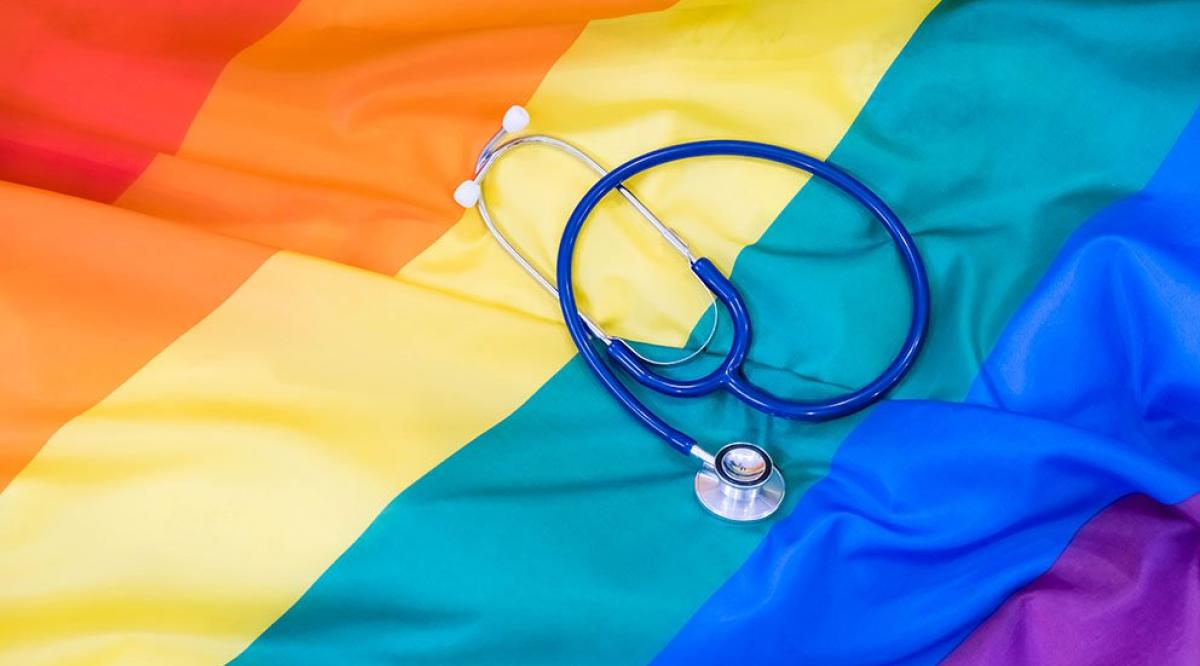Editor’s note: The opinions expressed by the authors do not necessarily reflect the opinions of the AAMC or its members.
John had been feeling run down for a few days. When he developed a fever, he made his way to an urgent care clinic. While there, he mentioned that his boyfriend had been sick the week before. The doctor looked up and asked, “You’re gay?” Sensing her chill, John decided to ask her about it. She confirmed his suspicions, walked out of the room, and didn’t return. John ultimately got care elsewhere.
John’s painful experience and other such stories — a transgender patient turned away from a clinic or a lesbian patient berated for not using birth control — underscore the need for vastly improved medical education on the health and well-being of lesbian, gay, bisexual, transgender, and queer (LGBTQ+) patients.
As experts in LGBTQ+ health, we are largely self-taught. Yes, we learned about gay men when discussing HIV and other sexually transmitted illnesses, but our medical schools did not include in their standard medical curricula training on hormone therapy, gender-affirming surgeries, or even the basics of sexual orientation and gender identity. Our residencies, unfortunately, also did not adequately prepare us to care for LGBTQ+ individuals.
It is time we fully recognize and act on the need to train future physicians to care for these woefully underserved and often misunderstood populations.
In 2017, 4.5% of the U.S. population identified as lesbian, gay, bisexual, or transgender, according to a Gallup poll. LGBTQ+ individuals live in every state and region of the country. And LGBTQ+ Americans face disturbing health disparities, such as higher rates of hypertension among gay and bisexual men, arthritis and heart disease among lesbian and bisexual women, and suicide among LGBTQ+ youth.
It is time we fully recognize and act on the need to train future physicians to care for these woefully underserved and often misunderstood populations.
A 2011 study of medical schools found that students were getting approximately five hours of education related to LGBT health, and a third of schools had no LGBT health training. More recently, in a 2017-18 AAMC Curriculum Inventory report, 76% of participating schools included some LGBTQ+ health themes, with half the schools reporting three or fewer learning activities, such as a lecture or group discussion. And a 2018 study of students at 10 medical schools found that around 80% felt “not competent" or “somewhat not competent” at treating sexual and gender minority patients.
This lack of training takes a toll on patients. Approximately 50% of transgender respondents reported having to teach their health care providers about transgender care. Even more alarming is that nearly 8% of LGB individuals and 25% of transgender and gender non-binary individuals reported being denied health care outright.
It’s clear we have to do better. Medical schools and teaching hospitals have an obligation to improve LGBTQ+ health education. But how?
Currently, most LGBTQ-related content introduces the concept of sexual and gender minority health during lectures or small group sessions on LGBTQ+ health. While this is an important start, it can lead to the perception that LGBTQ+ health is fundamentally separate from broader clinical training. Furthermore, many of these sessions are electives or student-led extracurricular activities, suggesting that the content is not important enough for curricular time and sometimes placing the burden of teaching on learners. What's more, offering electives related to LGBTQ+ health but failing to include such information throughout the curriculum can send the message that care of this population is somehow optional.
Creating more welcoming learning environments for LGBTQ+ students, faculty, and patients can help us graduate more competent and compassionate physicians.
Instead, we recommend a more integrated approach with content interwoven throughout curricula, and we would advise that this be done in existing, appropriate required courses. For example, students would study transgender care in endocrinology and learn about lesbian women’s comparatively low use of preventive cancer services in oncology. This would ensure that students were educated consistently, and it would allow for optimal linking of LGBTQ-specific skills with related broader educational themes.
Some schools have elected to initiate such an integrated approach as part of curriculum reform. In addition, some institutions, including ours, have dedicated ongoing faculty effort to ensure that LGBTQ-related curricular “threads” are woven appropriately throughout different courses. This sort of approach unquestionably requires administrative oversight, coordination with medical school curricular leaders, and dedicated faculty and staff time to organize. For those seeking guidance, the AAMC created a resource that describes steps various key stakeholders can take.
Although curricular design is essential, it’s difficult to disentangle curriculum from the learning environment. Creating more welcoming learning environments for LGBTQ+ students, faculty, and patients can help us graduate more competent and compassionate physicians. For example, a 2017 study found an association between positive interactions with LGBTQ+ faculty, trainees, and patients and reduced bias among medical students. Such interactions also were associated with feeling more qualified to care for LGBTQ+ patients.
Of course, such actions won’t help those who have already completed medical school. A recent perspective in The New England Journal of Medicine emphasizes that LGBTQ+ health must be covered at all levels of training, including graduate medical education and continuing medical education (CME). In terms of CME currently, only one jurisdiction — Washington, D.C. — requires physicians to complete education related to LGBTQ+ health. In addition, academic medicine institutions must enhance their faculty development and training to improve instructors’ understanding of LGBTQ+ patients' needs.
Ultimately, we physicians take an oath to care for patients, and we must be prepared to do so. It is time medical schools, teaching hospitals, and CME groups train physicians to provide compassionate, informed, and appropriate care to LGBTQ+ patients.
